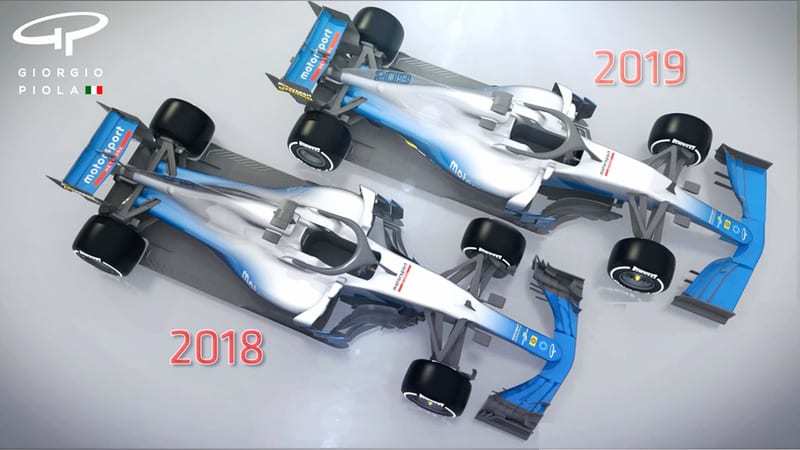Recent weeks have seen plenty of criticism over the level of excitement in Grand Prix races. The Monaco Grand Prix was a great spectacle as it always is but in terms of a thrilling race, it was a non-event. Changes need to be made if the F1 circus wants to remain one of the top sports that the world has to offer and proposed rule changes for the 2019 season aim to do just that.
A video produced by the tech team of Giorgio Piola and Mark Hughes has explained the major revisions aimed at producing a much more exciting season next year. It’s going to be a crucial period of time for the new owners of F1 but it’s clear that changes need to be made to the sport particularly when it comes to overtaking and closer competition.
F1 hasn’t got the greatest of histories when it comes to agreement between the teams but after the Monaco Grand Prix which at times looked like a reduced-speed procession as teams were afraid to damage their tyres meaning going in for pit stops that would inevitably cost them places in the race, drivers such as Lewis Hamilton weren’t at all happy about what had happened, and fans were extremely vocal on social media.
Change is on its Way
https://www.youtube.com/watch?v=s77adjmoqmU
The FIA are now working with a Pat Symonds-led aero team at F1, to work on shaping the technical regulations for the 2021 season which feels a very long way away. There will be changes before that date though and it’s believed that there will be game-changing aero changes being introduced next season that should hopefully liven things up.
These proposed changes include introducing a simplified front wing with standardised endplates, tweaked dimensions and no upper flaps. This would encourage the direction of more of the flow to the underbody rather than the outer body as this would make the car less sensitive to the disturbed wake of the car in front.
Another key idea is to delete the upper flaps that are at the outer ends of the wing This would make it impossible to create the vortices that are generated by the current, highly complex endplates that result in enhancing the outer-body aerodynamics. It’s aimed at putting more emphasis on directing airflow to the underbody and eliminate the current problems that make it harder for cars to follow one another closely which obviously has a great influence on the lack of overtaking.
Reducing Airflow
Also recommended is making changes to the dimensions of the front wing and limiting the number of under-wing strakes to two each side. Another current design problem are the winglets that are mounted on the brake ducts and again direct flow to the outer part of the body. 2019 will see those banned along with blown axles that use air directed out of the centre of the wheel at high speed to energise the flow down the outer surfaces of the bodywork further back
The list of proposed changes continues with plans to lower the size of barge boards and moving them forward to make them less sensitive to the airflow of the car that an attempt is being attempted to pass.
The rear wing endplates won’t be allowed to have horizontal gills that have a poor effect on the performance of the car behind. Also recommended is increasing the size of the DRS opening from 65mm to 85mm. With the width and height of the wing being changed the DRS should be around 25-30% more powerful. That would allow the car to be much more effective on the circuits that have too short a straight for the current system.
It’s all a bit technical of course but If these changes are adopted, then the chances of there being a return to the days when overtaking the car in front will be a lot higher and that can only mean more exciting races in the near future.





